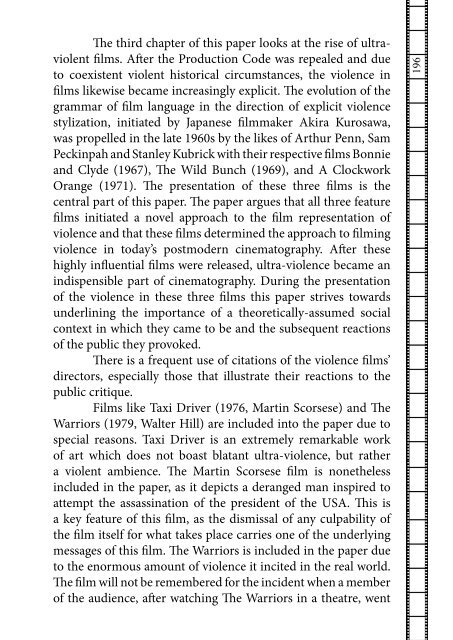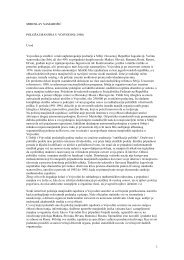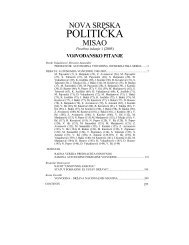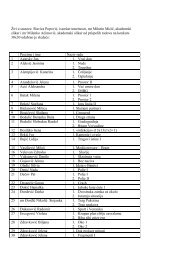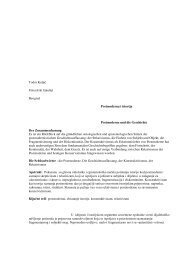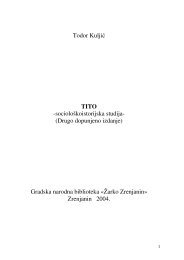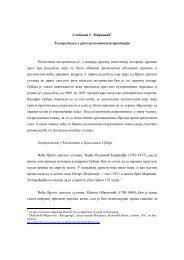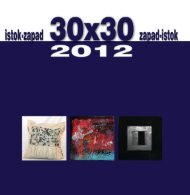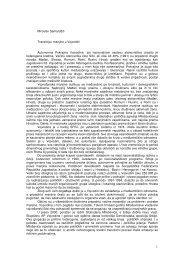You also want an ePaper? Increase the reach of your titles
YUMPU automatically turns print PDFs into web optimized ePapers that Google loves.
The third chapter of this paper looks at the rise of ultraviolent<br />
films. After the Production Code was repealed and due<br />
to coexistent violent historical circumstances, the violence in<br />
films likewise became increasingly explicit. The evolution of the<br />
grammar of film language in the direction of explicit violence<br />
stylization, initiated by Japanese filmmaker Akira Kurosawa,<br />
was propelled in the late 1960s by the likes of Arthur Penn, Sam<br />
Peckinpah and Stanley Kubrick with their respective films Bonnie<br />
and Clyde (1967), The Wild Bunch (1969), and A Clockwork<br />
Orange (1971). The presentation of these three films is the<br />
central part of this paper. The paper argues that all three feature<br />
films initiated a novel approach to the film representation of<br />
violence and that these films determined the approach to filming<br />
violence in today’s postmodern cinematography. After these<br />
highly influential films were released, ultra-violence became an<br />
indispensible part of cinematography. During the presentation<br />
of the violence in these three films this paper strives towards<br />
underlining the importance of a theoretically-assumed social<br />
context in which they came to be and the subsequent reactions<br />
of the public they provoked.<br />
There is a frequent use of citations of the violence films’<br />
directors, especially those that illustrate their reactions to the<br />
public critique.<br />
Films like Taxi Driver (1976, Martin Scorsese) and The<br />
Warriors (1979, Walter Hill) are included into the paper due to<br />
special reasons. Taxi Driver is an extremely remarkable work<br />
of art which does not boast blatant ultra-violence, but rather<br />
a violent ambience. The Martin Scorsese film is nonetheless<br />
included in the paper, as it depicts a deranged man inspired to<br />
attempt the assassination of the president of the USA. This is<br />
a key feature of this film, as the dismissal of any culpability of<br />
the film itself for what takes place carries one of the underlying<br />
messages of this film. The Warriors is included in the paper due<br />
to the enormous amount of violence it incited in the real world.<br />
The film will not be remembered for the incident when a member<br />
of the audience, after watching The Warriors in a theatre, went<br />
196


